4A0-101 Nokia Alcatel-Lucent Interior Routing Protocols and High Availability Free Practice Exam Questions (2025 Updated)
Prepare effectively for your Nokia 4A0-101 Alcatel-Lucent Interior Routing Protocols and High Availability certification with our extensive collection of free, high-quality practice questions. Each question is designed to mirror the actual exam format and objectives, complete with comprehensive answers and detailed explanations. Our materials are regularly updated for 2025, ensuring you have the most current resources to build confidence and succeed on your first attempt.
Given the NSAP address of 49.0012.1234.1234.1234.00, what area does the IS-IS router reside in?
Which of the following statements describe the major features of OSPF? Choose two answers.
Two IS-IS L1/L2 routers are in the same area on the same Ethernet segment. How many adjacencies will be formed between them?
Which of the following conditions will prevent an OSPF adjacency from reaching the full state? Choose three answers.
An Alcatel-Lucent 7750 SR receives a route via an IS-IS LSP with internal reach ability, and receives the same route via an OSPF type 5 LSA. If al protocol preferences are default, which route will be installed in the route table?
Which type of IS-IS router is summarization most likely to be configured on?
At what point is the LSP SRM flag cleared when an LSP is sent on an IS-IS point-to-point link?
Choose two answers.
Which of the following statements regarding IS-IS Hello packets are true? Choose two answers.
Click the exhibit button.
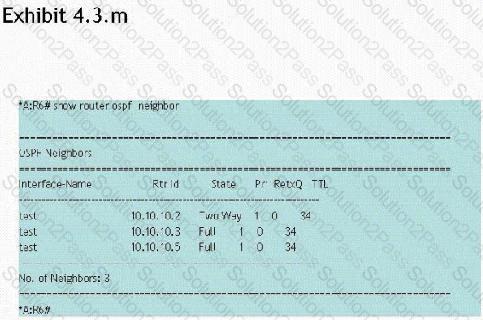
What can you deduce from the show command on router R6?
Click the exhibit button.
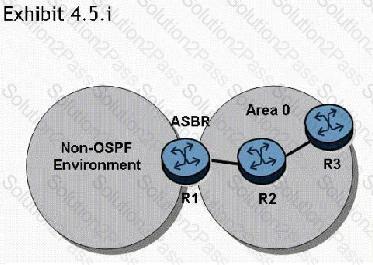
In the topology shown, router R1 is an ASBR configured to export external routes to OSPF. How many type 4 LSAs will be present in the network?
Click the exhibit button.

Routers R1 „ R2, and R3 are running a classful routing protocol between them. Assuming that router R1 advertises all directly connected networks, how will these networks be represented in router R3's routing table?
Click the exhibit button.
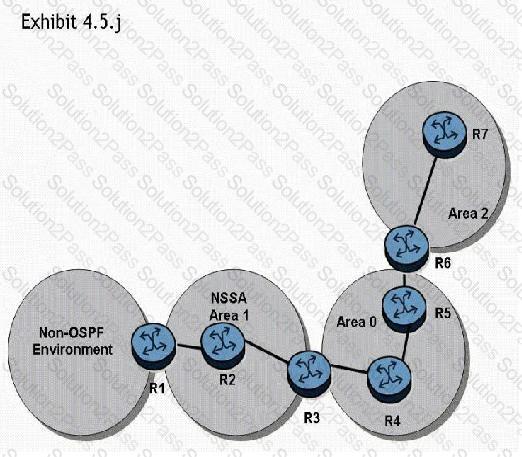
In the topology shown, router R1 is an ASBR configured to export external routes to OSPF. Which of the following statements regarding the OSPF LSAs in the network is true?
When IS-IS elects a DIS, what is used as the tie breaker on an Alcatel-Lucent 7750 SR, if the priorities are the same?
Click the exhibit button.
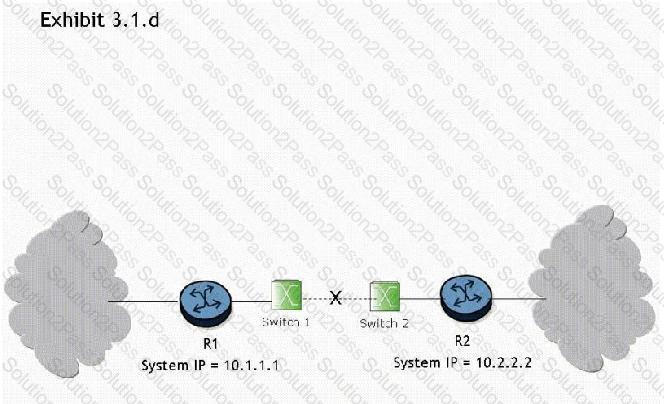
What triggers convergence of the routing protocol when the link between switch 1 and switch 2 goes down?
Which of the following statements apply to link state protocol behavior? Choose three answers.
Click the exhibit button.
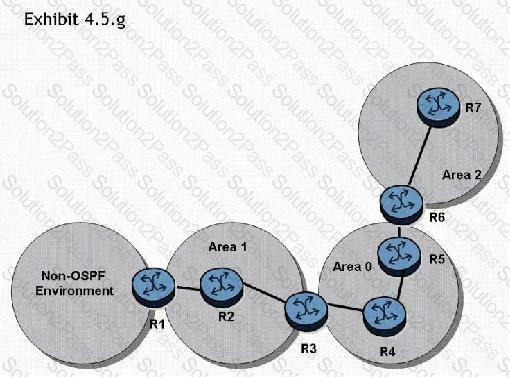
In the topology shown, router R1 is an ASBR configured to export external routes to OSPF. Assuming that there are no stub networks, which of the following statements regarding type 4 LSA generation is true?
Which OSPFv3 LSA type is generated by an ABR to advertise prefixes from one area to another?
Click on the exhibit.

Router R2 has a directly connected interface to network 192.168.3.0/24 that is included in IS-IS.
If router R4 redistributes the IS-IS route to 192.168.3.0/24 into OSPF, router R3 will receive two routes to 192.168.3.0/24. Assume that all IS-IS routers are L1/L2 capable and are in the same area.
Which of the following is TRUE?
Click on the exhibit.
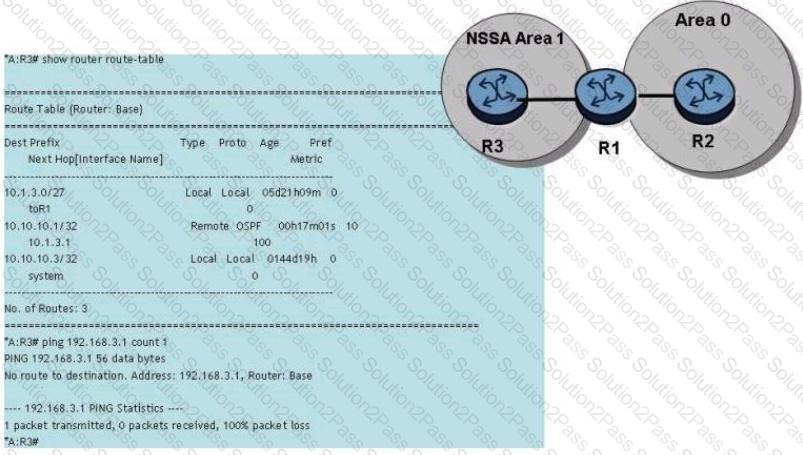
192.168.3.1 is a loopback interface on router R2 and is distributed to OSPF area 0, but the ping fails from router R3.
Which of the following is a possible solution to the problem?
Which of the following about Type 4 LSAs is FALSE?
